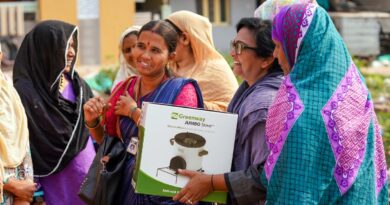Climate Change and Pakistan: Case Study by World Bank
 Flood-affected Pakistanis and their livestock flee Sindh province. Pic: UN
Flood-affected Pakistanis and their livestock flee Sindh province. Pic: UN
Pakistan, which is listed as the 7th most vulnerable country affected by climate change, is now coming to terms with the vagaries of the global phenomena. Small changes in temperature and rainfall have seriously damaged living standards, health and productivity in Pakistan, shows a new World Bank report.
In its –the Pakistan@100: Shaping the Future report, WB identifies the changes necessary for Pakistan to become a resilient country by 2047.
Environment and Poverty
Environmental degradation is not only threatening environmental sustainability, but also Pakistan’s ability to tackle poverty, as well as its ability to generate a substantial share of its growth and employment.
Pakistan needs to think for the long term with regard to environmental sustainability, many of the actions it could take to control and reverse environmental degradation which help the poorest and the most vulnerable.
According to reports from the country, in 2018 the Pakistani government launched the Clean Green Pakistan Program which is lauded by the environmentalists. Why? Because it is a people’s movement and everyone’s responsibility and focuses on behavioural change to create demand for better environmental services.
This made urban communities, school children, more aware of natural resources and the importance to protect them.
Public pressure can be built if there is access to environmental data:
- disclosure of pollution data to engage citizens and encourage preventive actions;
- effectively engaging with local communities and relevant stakeholders in the city development planning processes; and
- education and raising awareness to empower citizens.
Pakistan can strengthen its environmental protection departments’ capacity to disclose environment information and engage citizens in environmental management through awareness campaigns on pollution and green development, as part of the Clean Green Pakistan initiative.
Education on environment can promote effective citizen engagement like: Environmental Protection Agencies’ (EPA) and local governments’ environmental monitoring capacity can be improved.
Most of the data about high pollution levels in Pakistan come from global datasets and monitoring is currently weak and lacks granularity. The first step is to understand current pollution levels and sources by rebuilding the monitoring network, not only with equipment but also its protocols; analytical capacity; and technical, institutional, and financial sustainability. To plan an effective pollution reduction action plan, the authorities need to better understand the current pollution levels, concentration, trends, and sources.
Pakistan has an opportunity to enhance the devolution with environmental decentralization, distinguishing between and revising various level roles, given boundary and efficiency issues.
Serious health and productivity damage
Rising average temperatures are also expected to reduce labor productivity, impact health and migration. The study shows that labor productivity in Pakistan decreases as temperature increases. In addition, the warmer climate facilitates the spread of vector-borne and other infectious diseases, resulting in loss of productivity and income.
Climate-induced migration is another byproduct of this climate change. It is estimated that approximately 193 million people in Pakistan will live in climate hotspots – the total population of Pakistan as of 2017.
While agriculture in Pakistan’s northern areas is thriving due to the warmer temperatures, the study shows that Punjab and Sindh provinces – which contribute 53 percent and 30 percent to national GDP respectively – are likely to face a 3 percent decline in overall living standards. This decline can be attributed to lower incomes, as the changing climate will soon force people out of their traditional professional domains.
Incentivizing greener investments
When identifying growth opportunities for Pakistan, Green investment can offer a domain for growth too. Countries like Pakistan struggle to prioritize and allocate resources for climate change. The country needs massive and increased investments for growth and hence ‘greening’ investments.
The only way to reconcile investments with sustainability and avoid excessive social and health costs is to make them ‘greener’ from the beginning. For this, stronger regulation, enforcement, and EPAs are necessary. But these alone are not enough. Regulatory approaches must be complemented by incentives, economic tools, fiscal policies, and financing.
Pakistan needs a tax reform for higher investment, which represents an opportunity to design a greener tax regime that includes, for example, pro-growth, pro-poor environmental and carbon taxes, and the elimination of environment damaging subsidies (removal of subsidies for fuels consumed by motor vehicles and industries). It also needs to have a better financing regime for industries and small and medium enterprises.
This is an opportunity to develop green financing that makes access easier for environmentally responsible enterprises and activities.
(With inputs from World Bank and LEAD Pakistan)




